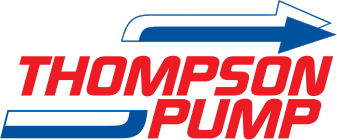Thompson Pumps Bypass Stormwater in Naples, FL
As part of planned municipal improvements, the City of Naples, Florida, was having the storm drain system located along State Road 41 relined. Metro Sewer Services of Sanford, Florida was awarded the contract.
For the relining to start, a temporary bypass system needed to be installed in order to handle stormwater in the event of rain. Metro Sewer Services used Thompson pumps in previous construction applications and were happy with the success they had experienced in the past. The goal was to design a storm water bypass system to meet the requirements, and allow the successful completion of the project.
After visiting the jobsite, Del Ritz, bypass representative for Thompson Pump, Port Orange, FL, found that the location of the storm drain was located in a beautifully landscaped area. Mobilizing the pumps needed for the bypass would require delicate maneuvering in order to maintain and protect the integrity of the existing landscaping.
He also found that the next manhole access within the storm water system was 2,600-feet away, along the sidewalk of the heavily traveled S.R. 41. Located in the middle of the bypass area was a road crossing that the discharge would have to travel through to reach its destination.
The contractor was required to keep all road crossings clear. This would require the temporary bypass system to run under the roadway. Located approximately 50-feet away was an existing 15-inch storm drain running underneath the road. In order to take advantage of the existing 15-inch storm drain, Ritz proposed reducing the size of the HDPE (high-density poly-ethylene) pipe from 18” to 12” to place the pipe through the existing underground storm drain. At precise points in the discharge system, where drastic turns and bends would be located, air release valves would be installed to release any air pressure that could build up within the storm drain system. By removing the air in the discharge system, the pumps would pump more water and operate even more efficiently. The discharge point ended with a 90-degree elbow, made of HDPE pipe, discharging into the next manhole within the storm water system, 2,600-feet away.
The general location of the bypass work was within a residential community, with churches and small businesses. Noise levels during the pump’s operation would have to be addressed.
Ritz proposed using four Thompson Pump 6” Sound Attenuated Compressor-Assisted Dry Prime Trash Pumps, each of which is capable of a maximum of 1,500-gallons per minute, and 102-feet of head. These units were equipped with Thompson Pump’s exclusive Enviroprime System® Priming System, which prevents blow-by, achieves prime without filling the casing with water.
The Silent Knight® Sound Attenuated Canopy reduces pump operating noise levels to below 70 dB(A) at 7 meters, or around that of the sound of a normal conversation between two people.
The suction lines for each pump would simply be inserted into the storm drain. The discharge lines from each pump would feed into a common manifold equipped with gate valves. This would allow the eventual removal, or replacement, of any pump in the system without affecting any of the other pumps. The manifold would then lead to 18” HDPE pipe to begin the discharge system.
The system was proposed to and immediately accepted by Metro Sewer Services. Crews began fusing together the HDPE pipe for the suction and discharge pipe systems, installing the pumps and situating the reducers and increasers needed to pass through the concrete storm drain pipe.
Once installed, the stormwater bypass system operated perfectly and at optimum levels as predicted. Within two weeks, Metro Sewer Services successfully re-lined the storm water system, thanks to Thompson Pump.
2005
